 String of pearls is an unusual succulent with nearly spherical leaves from South Africa. Named after British botanist Gordon Rowley, the species was recently moved from huge genus Senecio (which contains not just succulents but also common weeds like common groundsel) into the new genus Curio, but is likely to be identified as Senecio rowleyanus in literature and the horticulture trade. This tender evergreen perennial in the daisy family (Asteraceae) is native to dry areas of the eastern Cape of South Africa. There is also a variegated form with wide white stripes and sections (which might actually be S. herreianus which has slightly larger, elongated and striped round leaves and is also called string of pearls or string of beads).
String of pearls is an unusual succulent with nearly spherical leaves from South Africa. Named after British botanist Gordon Rowley, the species was recently moved from huge genus Senecio (which contains not just succulents but also common weeds like common groundsel) into the new genus Curio, but is likely to be identified as Senecio rowleyanus in literature and the horticulture trade. This tender evergreen perennial in the daisy family (Asteraceae) is native to dry areas of the eastern Cape of South Africa. There is also a variegated form with wide white stripes and sections (which might actually be S. herreianus which has slightly larger, elongated and striped round leaves and is also called string of pearls or string of beads). 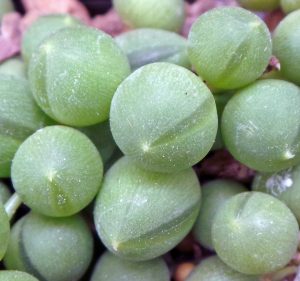 The plant grows from weak surface roots, producing trailing stems up to three feet long on the ground which can root where they touch soil to form dense mats. It often grows under bushes or between rocks which provide some protection from intense sunlight. The alternate, water-storing leaves are the size and shape of small peas (each to 1/4” diameter) with a small pointed tip on the end and a thin stripe of dark green along the side. The round shape of the leaves minimizes the surface area exposed to dry desert air and therefore reduces evaporative water loss but also reduces the surface area where photosynthesis can occur compared to a normal thin, flat leaf. The ban of darker, translucent tissue on the side of the leaf is an “epidermal window” which allows light to enter the interior of the leaf, effectively increasing the area available for photosynthesis. This adaptation to arid environments is seen in several other succulents from southern Africa, including the related Senicio radicans, and in baby toes (Fenestraria spp.) and Haworthia cooperi which grow underground, exposing only the leaf tips.
The plant grows from weak surface roots, producing trailing stems up to three feet long on the ground which can root where they touch soil to form dense mats. It often grows under bushes or between rocks which provide some protection from intense sunlight. The alternate, water-storing leaves are the size and shape of small peas (each to 1/4” diameter) with a small pointed tip on the end and a thin stripe of dark green along the side. The round shape of the leaves minimizes the surface area exposed to dry desert air and therefore reduces evaporative water loss but also reduces the surface area where photosynthesis can occur compared to a normal thin, flat leaf. The ban of darker, translucent tissue on the side of the leaf is an “epidermal window” which allows light to enter the interior of the leaf, effectively increasing the area available for photosynthesis. This adaptation to arid environments is seen in several other succulents from southern Africa, including the related Senicio radicans, and in baby toes (Fenestraria spp.) and Haworthia cooperi which grow underground, exposing only the leaf tips.  String of pearls blooms in summer, producing ½ inch compound, daisy-like flowers of white discoid flowers with long red stamens and bright yellow anthers on 1½ inch long peduncles. The small flowers are not showy but are fragrant; it is said to have a sweet and spicy, cinnamon-like scent. The flowers are followed by multiple seeds, each with a white cottony pappus which aids in dispersal by the wind.
String of pearls blooms in summer, producing ½ inch compound, daisy-like flowers of white discoid flowers with long red stamens and bright yellow anthers on 1½ inch long peduncles. The small flowers are not showy but are fragrant; it is said to have a sweet and spicy, cinnamon-like scent. The flowers are followed by multiple seeds, each with a white cottony pappus which aids in dispersal by the wind. 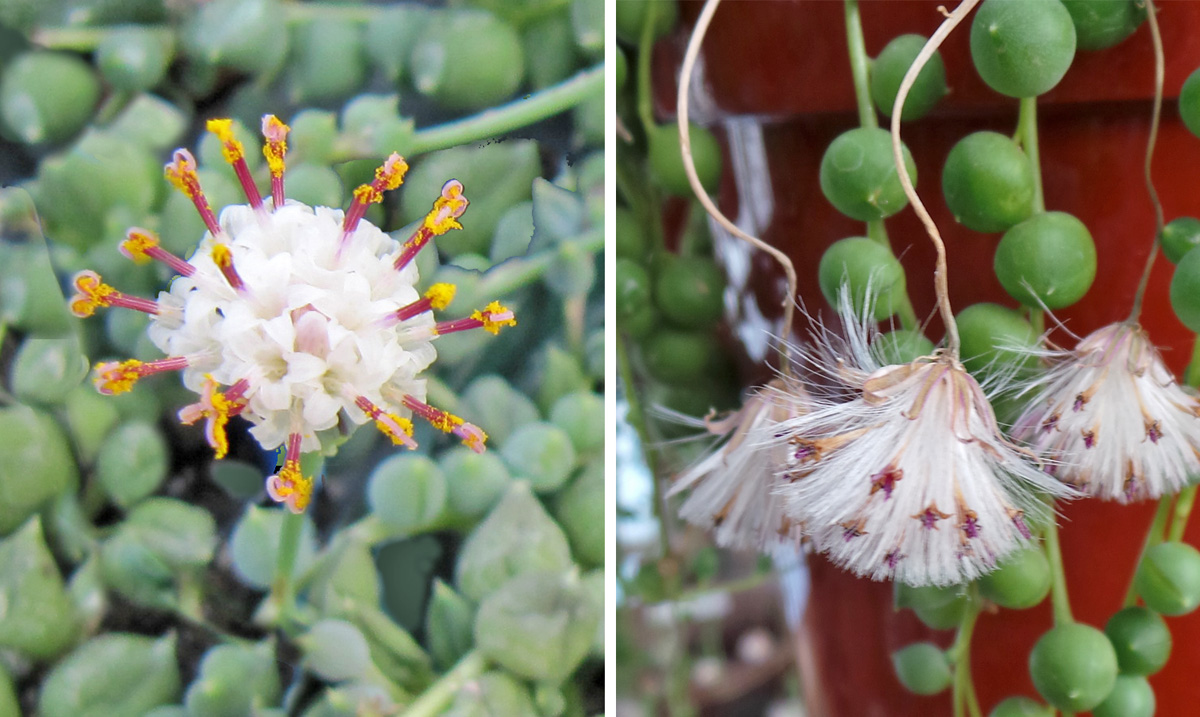 String of pearls is commonly grown as a houseplant or an outdoor ornamental in frost-free climates. It is often grown in hanging baskets to allow the trailing stems to spill downward. It could also be grown in a flat dish allowing it to maintain the trailing growth habit seen in the wild. Indoor containers can be moved outside for the growing season but need to be acclimated gradually to prevent sunburn, should be protected from excess rainfall, and must be moved back indoors before frost.
String of pearls is commonly grown as a houseplant or an outdoor ornamental in frost-free climates. It is often grown in hanging baskets to allow the trailing stems to spill downward. It could also be grown in a flat dish allowing it to maintain the trailing growth habit seen in the wild. Indoor containers can be moved outside for the growing season but need to be acclimated gradually to prevent sunburn, should be protected from excess rainfall, and must be moved back indoors before frost. 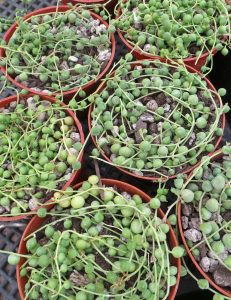 Like other succulents, this plant is relatively low maintenance and only needs bright light, well-drained soil, and infrequent watering. Root rot from overwatering is the most common cause of its demise. Grow in a very well-draining soil mix, such as cactus mix or add inorganic materials such as small pea gravel, sharp sand, poultry grit or pumice to potting medium (up to 1:1 mixture). Use a shallow container since the plants will not produce an extensive root system (and if they are unable to quickly remove moisture from a large soil volume, they will be more susceptible to root rot). Clay containers are better than plastic or ceramic because the material allows evaporation through the sides so the soil will dry out more quickly. Allow the potting medium to dry out completely between waterings, providing more water in summer than in winter when the plant is not actively growing. Providing a rest period during the winter with cool (55-60°F). Dry conditions may promote blooming in summer. Plants need to be watered when the leaves start to look a bit shriveled. Repot every year or two or fertilize lightly in spring. Mealybugs or aphids may infest plants but otherwise they have few pest problems. The leaves are slight toxic; ingestion may cause vomiting or diarrhea the plant’s sap may cause skin irritation or rash in sensitive individuals. Propagate string of pearls by taking 3-4 inch stem tip cuttings. Strip 3-4 leaves from the bottom of the cutting and place in or on moist potting mix (lightly cover the last few bottom nodes) and roots should quickly develop at each node. Mist the soil surface to avoid overwatering until the roots are established. This plant can also be grown from seed but it is not commonly available. – Susan Mahr, University of Wisconsin – Madison
Like other succulents, this plant is relatively low maintenance and only needs bright light, well-drained soil, and infrequent watering. Root rot from overwatering is the most common cause of its demise. Grow in a very well-draining soil mix, such as cactus mix or add inorganic materials such as small pea gravel, sharp sand, poultry grit or pumice to potting medium (up to 1:1 mixture). Use a shallow container since the plants will not produce an extensive root system (and if they are unable to quickly remove moisture from a large soil volume, they will be more susceptible to root rot). Clay containers are better than plastic or ceramic because the material allows evaporation through the sides so the soil will dry out more quickly. Allow the potting medium to dry out completely between waterings, providing more water in summer than in winter when the plant is not actively growing. Providing a rest period during the winter with cool (55-60°F). Dry conditions may promote blooming in summer. Plants need to be watered when the leaves start to look a bit shriveled. Repot every year or two or fertilize lightly in spring. Mealybugs or aphids may infest plants but otherwise they have few pest problems. The leaves are slight toxic; ingestion may cause vomiting or diarrhea the plant’s sap may cause skin irritation or rash in sensitive individuals. Propagate string of pearls by taking 3-4 inch stem tip cuttings. Strip 3-4 leaves from the bottom of the cutting and place in or on moist potting mix (lightly cover the last few bottom nodes) and roots should quickly develop at each node. Mist the soil surface to avoid overwatering until the roots are established. This plant can also be grown from seed but it is not commonly available. – Susan Mahr, University of Wisconsin – Madison
String of Pearls is one of the most popular trailing succulents for indoor gardening. With its unique spherical foliage resembling beautiful beads on a necklace, it’s easy to see why this plant is so beloved. If you’re looking to add a String of Pearls to your plant collection, shopping online is a convenient way to find healthy, vibrant specimens. This ultimate guide covers everything you need to know about choosing and caring for String of Pearls plants ordered online.
An Overview of String of Pearls
String of Pearls also known by its botanical name Curio rowleyanus is a trailing succulent native to South Africa. It features long, slender stems lined with green, pea-sized leaves. The leaves grow in opposite pairs along the vines, stacked together to create the appearance of peas strung together on a string – hence the common name.
This fast-growing succulent can reach lengths of 3 feet or longer when given proper care and conditions. The vines gracefully spill over the edges of containers, making String of Pearls ideal for hanging baskets and high shelves. Their cascading nature also looks beautiful in wall planters or trailing down a bookshelf.
In the wild, String of Pearls grows as a groundcover plant in rocky, arid regions It thrives in hot, dry environments with plenty of sunlight When grown as a houseplant, it does best in bright, indirect light with minimal watering. The key is providing well-draining soil and allowing it to dry out between waterings.
Choosing a Healthy String of Pearls Online
When shopping for plants online, it’s important to inspect listings carefully to ensure you’ll receive a vigorous healthy specimen. Here’s what to look for when selecting a String of Pearls
-
Full, evenly spaced foliage – Look for vines with consistent bead-like leaves evenly distributed along the stems. Avoid plants with large gaps or sparse foliage.
-
Robust, unbroken stems – The vines should be firm and sturdy, not limp, dried out or broken. Watch for signs of damage during shipping.
-
Vibrant green color – Opt for plants with rich green, spherical leaves. Pale or yellowing leaves indicate stress or poor growing conditions.
-
Established root system – Mature String of Pearls with an established root system adapt better and suffer less transplant shock. Juvenile cuttings take longer to establish.
-
Reputable seller – Purchase from sellers with excellent ratings and reviews for shipping healthy plants. Beware steep discounts on plants – this may indicate poor quality.
Ordering and Unboxing Your Plant
Reputable online plant stores take measures to ensure your String of Pearls arrives safely. Here’s what to expect when your plant ships and how to unbox it:
-
Packaged with care – The plant will be nested securely in soil or padding to avoid jostling and damage during transit.
-
Insulated box – If shipping during extreme cold or heat, the plant will ship in an insulated box with heating/cooling packs.
-
Watering advice – Good sellers provide instructions on when to water after arrival to prevent transplant shock.
-
Unbox immediately – As soon as the plant arrives, unbox it to inspect for damage and rehydrate the soil.
-
Check for pests – Examine under leaves and along stems to ensure no pests are present. Treat if necessary.
-
Allow time to adjust – Give the plant 1-2 weeks to recover from shipping before repotting or handling excessively.
Providing Optimal Growing Conditions
The key to keeping a String of Pearls houseplant thriving is mimicking the hot, arid environment of its native range. Here are its ideal care requirements:
-
Light: Bright, indirect sunlight. Can tolerate some direct morning sun.
-
Water: Allow soil to fully dry out between waterings. Water deeply but infrequently.
-
Temperature: Average room temperature, 65-80°F. Avoid cold drafts.
-
Humidity: Prefers low to moderate humidity, 40-50%
-
Soil: Fast-draining cactus mix or potting soil with added perlite/sand.
-
Fertilizer: Diluted succulent fertilizer every 2-3 months during active growth.
-
Pot: Drainage holes are essential. Use a terra-cotta pot to absorb moisture.
Troubleshooting Common Problems
When cared for properly, String of Pearls makes an easy, low maintenance houseplant. But they may encounter a few issues if their needs aren’t met:
-
Leggy growth – If stems become elongated and sparse, increase sunlight exposure. Prune leggy vines.
-
Leaf drop – Natural leaf drop is normal, but excessive drop may indicate overwatering. Allow soil to dry out.
-
Root rot – Caused by wet soil, remove affected plants from soil, trim dead roots and repot in dry soil.
-
Pests – Mealybugs and spider mites commonly affect String of Pearls. Wipe away pests with alcohol or use insecticidal soap.
-
Slow growth – Encourage growth with more sunlight, warmth and careful watering. Fertilize during growing season.
Decorating with String of Pearls
One of the best parts of growing String of Pearls is incorporating them into your living space. Some fun ways to display them:
-
Hang a basket near a window so the vines can trail in the sunlight.
-
Place a pot on a bookshelf and let the stems drape down.
-
Plant in a wall planter, letting the succulent cascade over edges.
-
Arrange in a tiered planter, mixing with other trailing succulents.
-
Top a tall plant stand or shelf for a fountain-like effect.
-
Plant as an edging plant in an open terrarium or glass container.
With the right care and optimal growing conditions, a String of Pearls plant ordered online can flourish in your home for years of enjoyment. Just be sure to choose a healthy plant from a reputable seller and provide the light, soil and watering it needs to thrive. This unique succulent vine makes a wonderful living decoration!

Ask Your Gardening Question
If you’re unable to find the information you need, please submit your gardening question here:
Latest from Wisconsin Yard & Garden
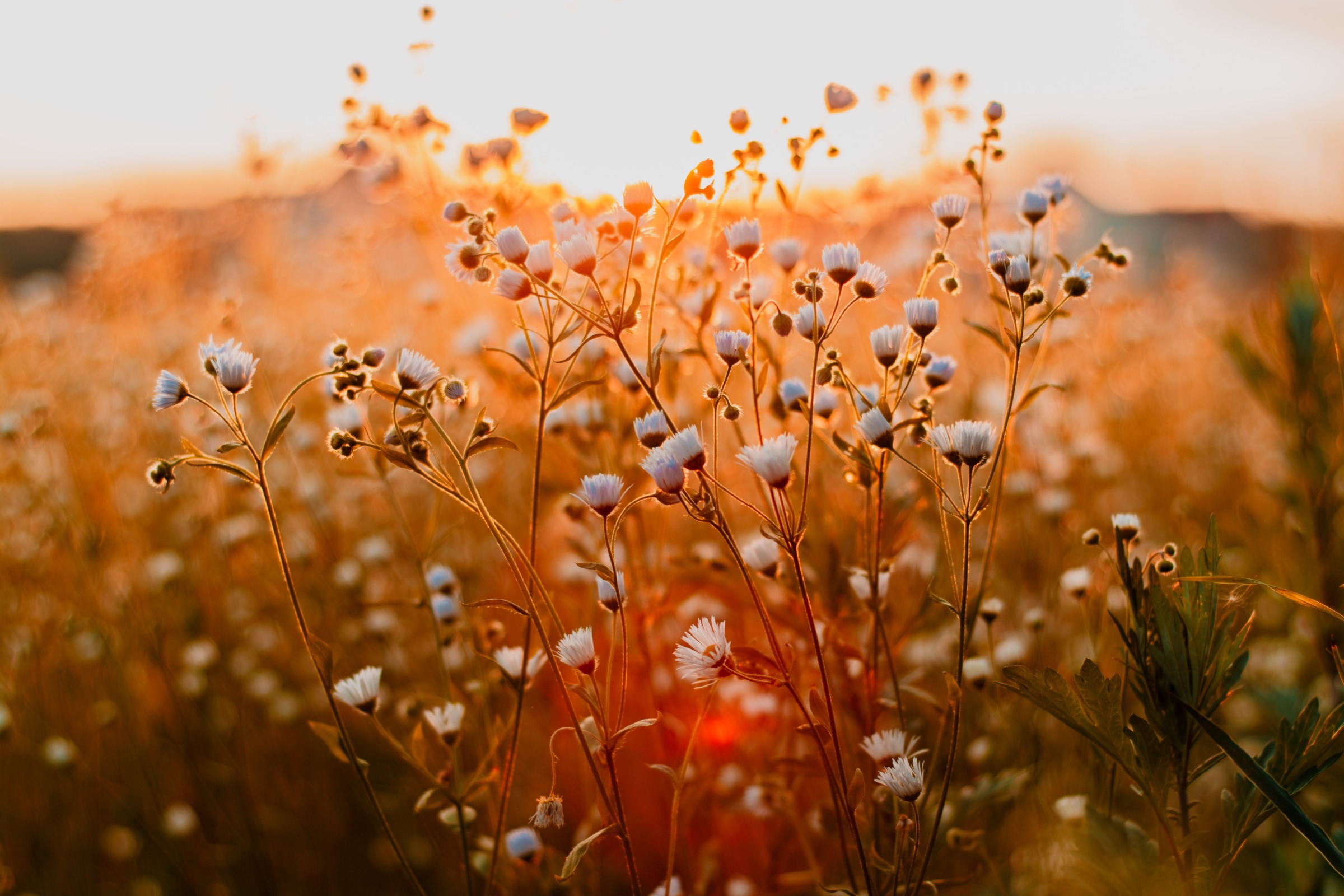
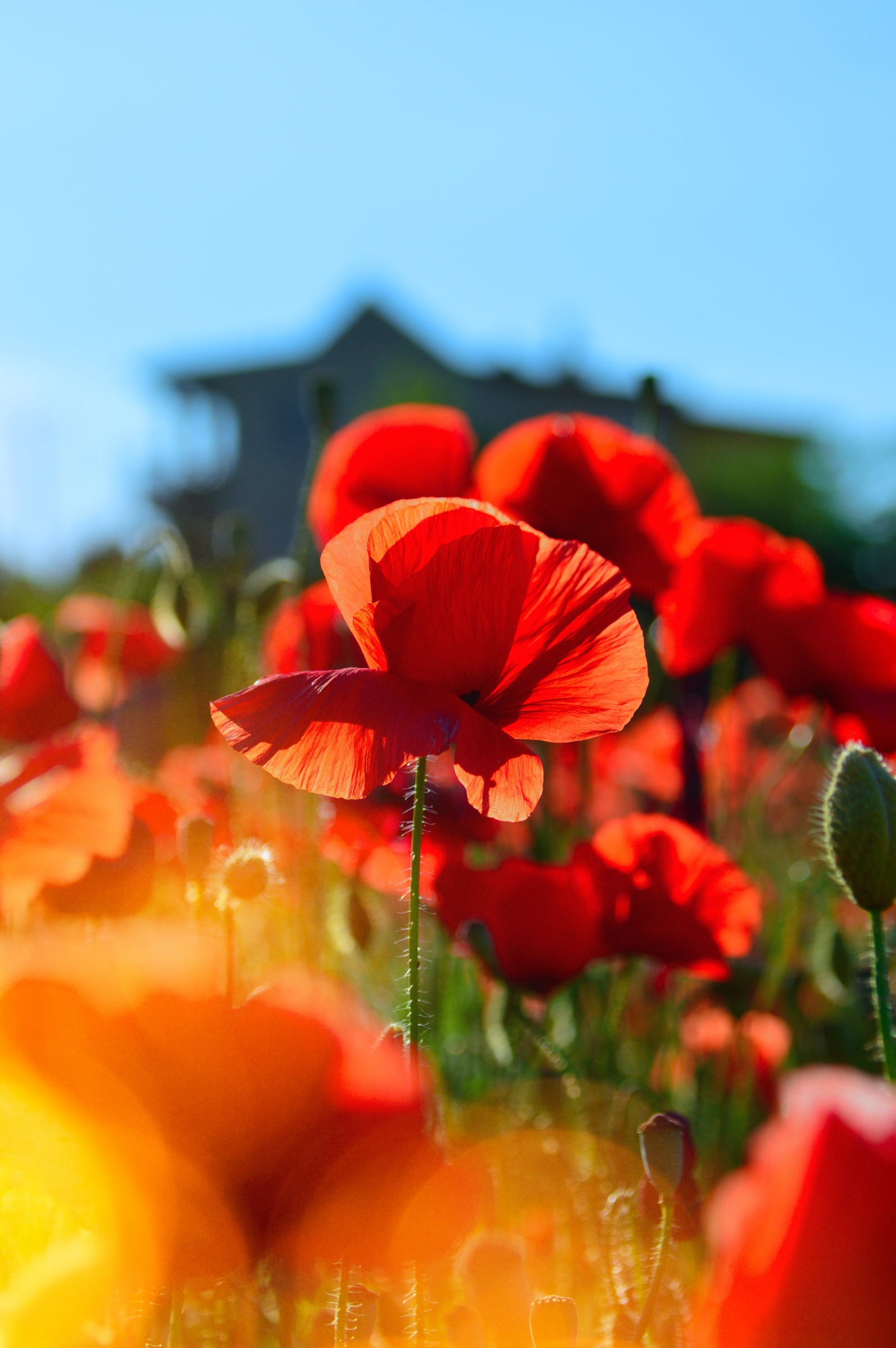

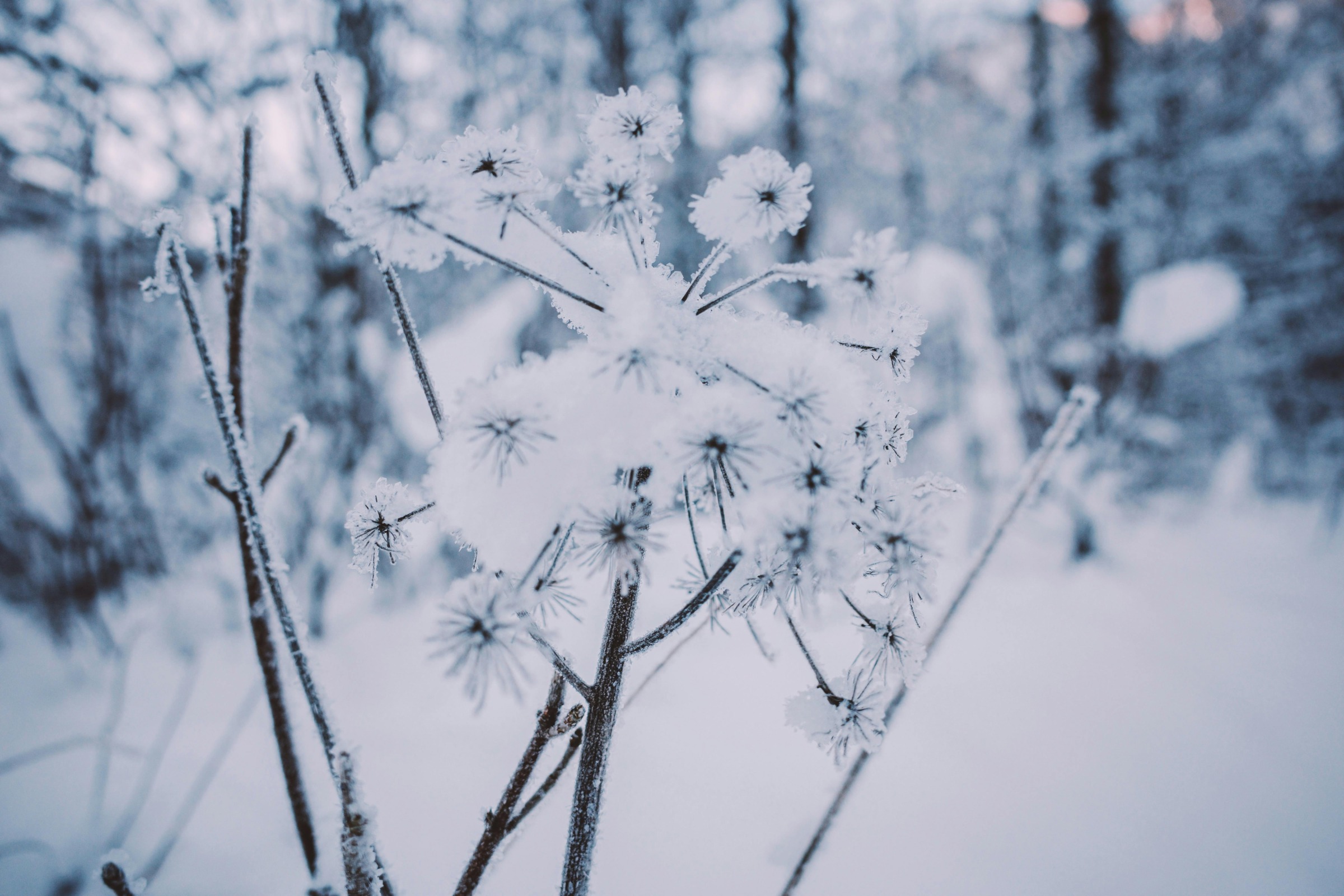
String of Pearls Succulent – The Ultimate Guide
FAQ
Why are strings of pearls so expensive?
Factors such as luster, surface quality, shape, size, color, and nacre thickness can all affect the overall quality of the pearls and their value. Length and Size: The length and size of a string of pearls can also impact its value.
Where is the best place to put a String of Pearls plant?
-
Light:
- String of Pearls thrives in bright, indirect light.
- A south or west-facing window is a good option, but be mindful of direct sunlight, especially in the afternoon, as it can scorch the leaves.
- If you have a plant that is struggling, try moving it to a spot with more light or using grow lights.
- If you are growing the plant outdoors, ensure it is protected from harsh midday sun, but still receives bright light.
- String of Pearls thrives in bright, indirect light.
-
Temperature:
- String of Pearls prefers stable temperatures and should be kept away from drafts, heaters, or other heat sources.
- Ideal temperatures are between 70 and 80 degrees Fahrenheit (21-27 degrees Celsius).
- String of Pearls prefers stable temperatures and should be kept away from drafts, heaters, or other heat sources.
-
Humidity:
- String of Pearls plants do not thrive in high humidity.
- Keep them in an area with good ventilation and well-draining soil.
- String of Pearls plants do not thrive in high humidity.
-
Watering:
- String of Pearls are succulents and can store water in their leaves, so they are drought-tolerant and should be watered sparingly.
- Allow the soil to dry out completely between waterings to prevent root rot.
- Water more frequently during the growing season (spring and summer) and less during the dormant season (fall and winter).
- String of Pearls are succulents and can store water in their leaves, so they are drought-tolerant and should be watered sparingly.
-
Soil:
- String of Pearls needs well-draining soil, such as a cactus or succulent mix.
- Ensure the soil is not waterlogged, as this can lead to root rot.
- String of Pearls needs well-draining soil, such as a cactus or succulent mix.
-
Other Considerations:
- String of Pearls plants are toxic to pets and children, so it’s best to keep them out of reach.
- Consider hanging baskets or high shelves to display their trailing vines.
- String of Pearls plants are toxic to pets and children, so it’s best to keep them out of reach.
-
Outdoors:
- String of Pearls can be grown outdoors in USDA hardiness zones 9-12, where temperatures stay consistently above 30°F.
- In these climates, place the plant in an airy, well-drained spot that receives bright, indirect morning sunlight but is shielded from harsh midday rays.
- String of Pearls can be grown outdoors in USDA hardiness zones 9-12, where temperatures stay consistently above 30°F.
How much can I get for a String of Pearls?
The price for a real pearl necklace will range anywhere from $100 to $10,000 and more. A strand of lower quality, small Freshwater pearls, for example, will start right around $100 or so, while the highest quality Hanadama Akoya pearl strands in the largest sizes top out around $10,000 to $11,000.
How do I make my String of Pearls fuller?
-
Pruning for Bushier Growth:
- Identify and trim back any leggy or dead stems using clean, sharp scissors or pruning shears.
- Pruning encourages new growth and can help the plant become bushier.
- When you trim a vine, two or more vines will typically grow back.
- You can also propagate the cuttings to create more plants.
- Identify and trim back any leggy or dead stems using clean, sharp scissors or pruning shears.
-
Light and Watering:
- Provide your String of Pearls with bright, indirect light, ideally 4-6 hours per day.
- String of Pearls are succulents and are sensitive to overwatering, so allow the soil to dry out completely between waterings.
- Water once every two to three weeks during spring and summer, and less frequently in winter.
- Provide your String of Pearls with bright, indirect light, ideally 4-6 hours per day.
-
Soil and Pot:
- Use a well-aerated soil mix.
- Consider repotting if the plant outgrows its pot, ideally in springtime.
- A small terracotta pot can be a good choice.
- Use a well-aerated soil mix.
-
Additional Tips:
- Make sure the entire pot is receiving enough light to prevent the top from drying out and dying.
- String of Pearls don’t require heavy feeding.
- Make sure the entire pot is receiving enough light to prevent the top from drying out and dying.
What is a string of pearls plant?
String of pearls plants love bright light and dry indoor air. The perfect houseplant for winter in the home. Shipping calculated at checkout. Senecio rowleyanus, commonly known as string of pearls plant or string-of-beads, is a creeping succulent vine. It is native to the drier parts of southwest Africa.
Can string of pearls be propagated?
Thankfully it is easy to propagate the plant using its stems. Though typically cultivated globally year-round as a hanging plant, in its east African natural desert habitat, string of pearls plants are terrestrial and form a ground cover. You can plant it any time but will have the most success in the warmer months.
Can string of pearls live in soil?
Senecio rowleyanus variegata, aka variegated string of pearls, propagated in soil. Credit: Creative by Nature String of pearls only live a few years before they die away. But you can keep your plants growing by propagating their stems to create new string of pearl plants. This is also the best way to salvage plants with root rot!
How long do string of pearls live?
String of pearls are short-lived plants that only live for about 3 to 5 years. However, you can keep these plants around a lot longer by propagating new plants from stem cuttings and providing your plants with the right balance of light and water.
Do strings of pearls have seeds?
The plant bears seeds in much the same manner as marigold or dandelion, so when you pull the individual tufts away, they’ll come with a seed attached to the bottom. Here’s a picture of the seeds I saved from my string of pearls plant. They are tiny, and roughly cylindrical/rectangular in shape. Can strings of pearls grow in just water?
Where do string of pearls come from?
Also known as string of beads, string of peas, or rosary vines, string of pearls belong to the Asteraceae or daisy family and they come from the Cape of South Africa. In the wild, string of pearl plants grow as groundcovers on dry, rocky soil, and their spreading stems root when they touch the earth and form dense mats over time.
